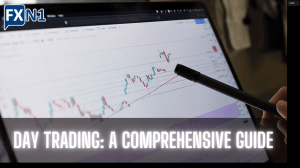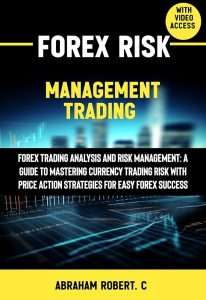Mastering Forex Trading with a Demo Account: A Comprehensive Guide
Embarking on the journey of forex trading can feel daunting. The complexities of global markets‚ fluctuating exchange rates‚ and the potential for substantial gains and losses can be overwhelming for newcomers. However‚ before risking your hard-earned capital‚ a crucial step is to hone your skills and develop your trading strategy using a forex trading demo account. This invaluable tool allows you to simulate real-market conditions without the financial risk‚ providing a safe space to learn and experiment. Understanding the nuances of forex trading is paramount‚ and a demo account provides the perfect environment to acquire this understanding. This comprehensive guide will explore the benefits‚ functionalities‚ and optimal usage of a demo account to help you on your path to becoming a successful forex trader.
Understanding the Forex Market
The foreign exchange market (forex or FX) is the largest and most liquid financial market globally. It operates 24 hours a day‚ five days a week‚ facilitating the buying and selling of currencies. Unlike traditional stock markets with centralized exchanges‚ forex trading occurs over-the-counter (OTC)‚ meaning transactions take place directly between participants through electronic networks. This decentralized nature contributes to its high liquidity and the ability to trade around the clock. Understanding the dynamics of supply and demand‚ global economic events‚ and geopolitical factors is essential for successful forex trading.
Key Concepts in Forex Trading
- Currency Pairs: Forex trading involves exchanging one currency for another‚ represented as currency pairs (e.g.‚ EUR/USD‚ GBP/JPY). The first currency is the base currency‚ and the second is the quote currency.
- Pips and Lots: A pip (point in percentage) is the smallest price movement in a currency pair. A lot represents the trading volume‚ typically 100‚000 units of the base currency.
- Leverage: Forex brokers offer leverage‚ allowing traders to control larger positions with smaller amounts of capital. Leverage magnifies both profits and losses.
- Spreads: The spread is the difference between the bid (buying) and ask (selling) price of a currency pair.
- Margin: Margin is the amount of capital a trader needs to maintain open positions. If the margin falls below a certain level (margin call)‚ the broker may close the positions.
The Power of a Forex Trading Demo Account
A forex trading demo account provides a risk-free environment to practice trading strategies‚ learn technical analysis‚ and develop a trading plan without risking real money. It’s an invaluable tool for both beginners and experienced traders who want to test new strategies or adapt to market changes. This allows for a gradual learning curve‚ minimizing potential financial losses during the initial stages of forex trading education.
Benefits of Using a Demo Account
- Risk-Free Trading: Practice trading without risking your capital. This is crucial for beginners to learn the ropes without the fear of financial loss.
- Develop Trading Strategies: Test different strategies and refine your approach without the pressure of real-market consequences.
- Learn Technical Analysis: Practice using technical indicators and chart patterns to identify potential trading opportunities.
- Master Platform Functionality: Familiarize yourself with the trading platform’s features and tools in a risk-free setting.
- Manage Emotions: Practice managing emotions under pressure without the emotional toll of real-money losses.
- Gain Confidence: Build confidence in your trading abilities before venturing into live trading.
Choosing the Right Forex Broker and Demo Account
Not all forex brokers are created equal. Choosing a reputable broker with a user-friendly platform and a robust demo account is crucial for a successful learning experience. Look for brokers regulated by reputable financial authorities‚ ensuring the security of your funds (even in a demo environment‚ you want a platform you trust). Consider factors such as platform features‚ available assets‚ spreads‚ and customer support when making your choice. A good broker will offer educational resources alongside the demo account to further enhance your learning experience.
Key Factors to Consider
When selecting a forex broker and demo account‚ prioritize factors such as regulatory compliance‚ platform usability‚ available educational resources‚ spread competitiveness‚ and customer support responsiveness. Thorough research is essential to ensure you’re partnering with a reputable and supportive broker that is conducive to your learning and growth as a trader.
Strategies for Effective Demo Account Usage
While a demo account is a powerful tool‚ maximizing its effectiveness requires a structured approach. Treat your demo account as if it were a real account‚ adhering to your planned trading strategy and risk management rules. This disciplined approach will better prepare you for the transition to live trading. Don’t simply randomly place trades; develop a plan and stick to it‚ learning from your mistakes.
Developing a Trading Plan
A well-defined trading plan is crucial for success in forex trading. This plan should outline your trading goals‚ risk tolerance‚ preferred trading style (scalping‚ day trading‚ swing trading‚ etc.)‚ and entry/exit strategies. Backtesting your strategies on historical data is also beneficial before implementing them on your demo account. The demo account allows you to refine this plan without financial repercussions.
Risk Management in a Demo Account
Even in a demo account‚ practicing responsible risk management is vital; Set stop-loss orders to limit potential losses‚ and avoid over-leveraging. This disciplined approach will translate directly to your live trading‚ minimizing potential losses when real capital is involved. The discipline learned here is invaluable in real market conditions.
Transitioning from Demo to Live Trading
Once you’ve gained sufficient experience and confidence using a demo account‚ the transition to live trading requires careful planning. Start with a small amount of capital to minimize risk and gradually increase your position sizes as your confidence and experience grow. Continuously monitor your performance and adapt your strategy as needed. Never stop learning and refining your approach; The knowledge gained in a risk-free environment is only the beginning.
Monitoring and Adapting Your Strategy
Consistent monitoring and adaptation are key to long-term success. Track your performance‚ analyze your trades‚ and identify areas for improvement. Market conditions change constantly‚ so be prepared to adjust your strategy accordingly. The ability to adapt is critical for sustained profitability.







